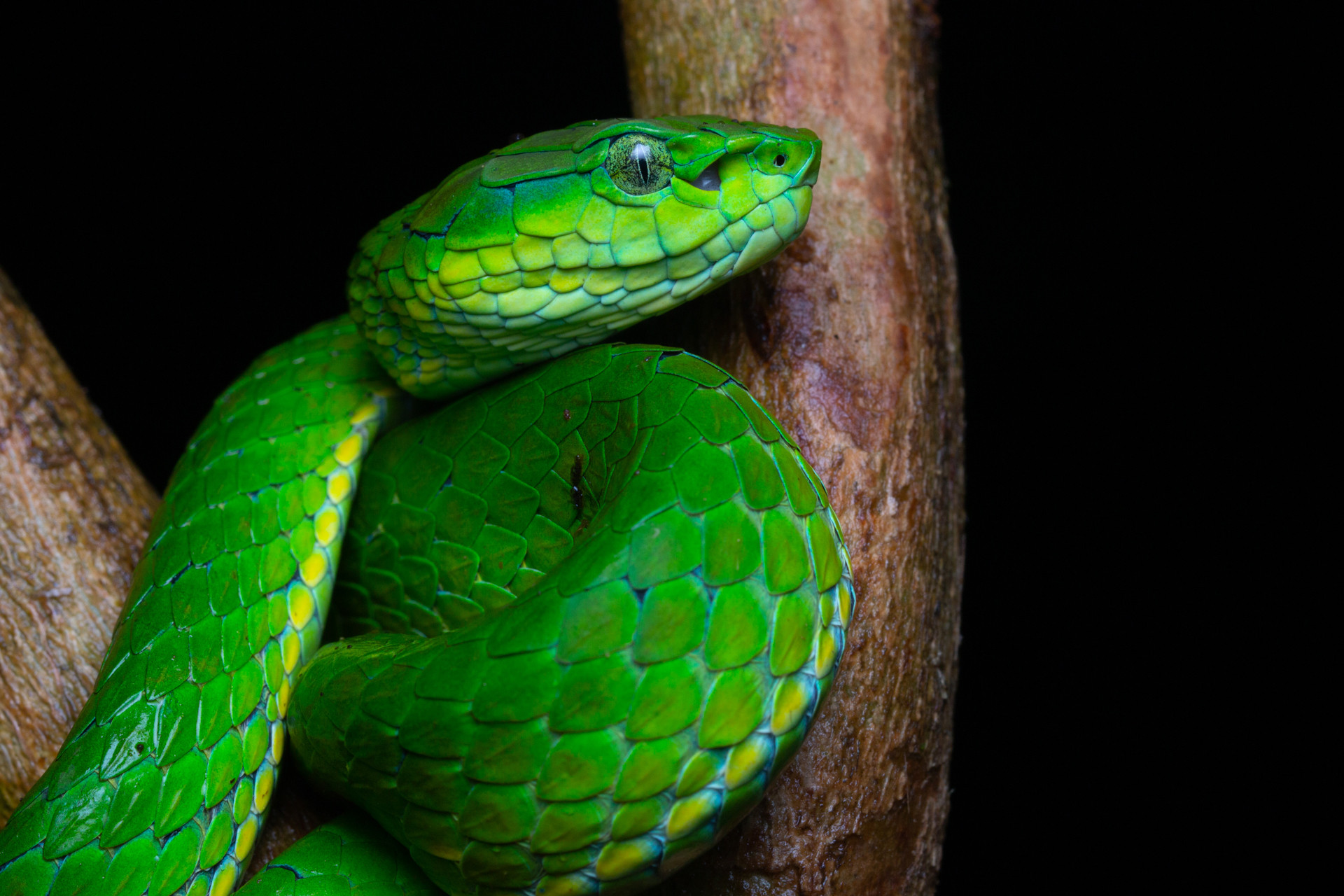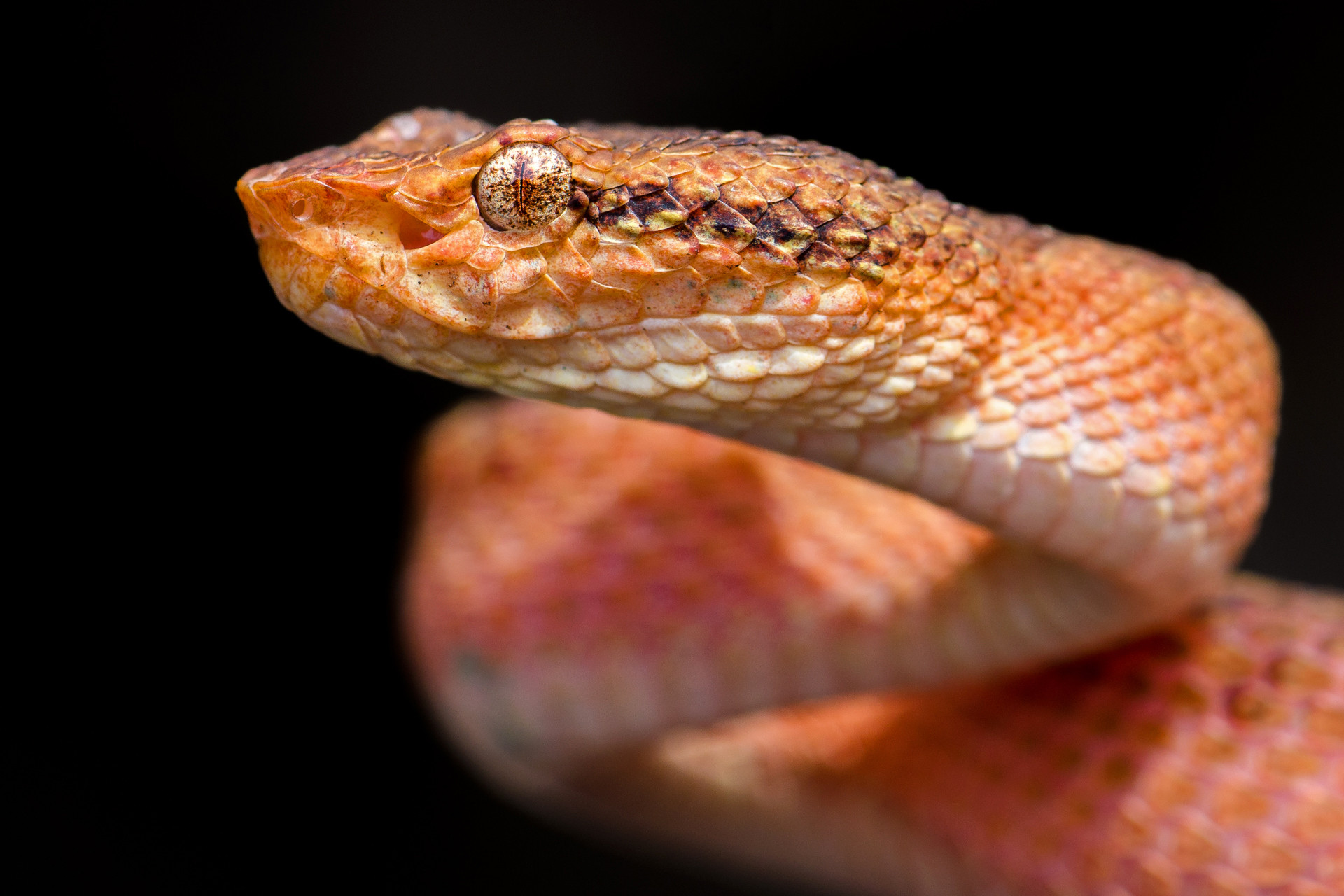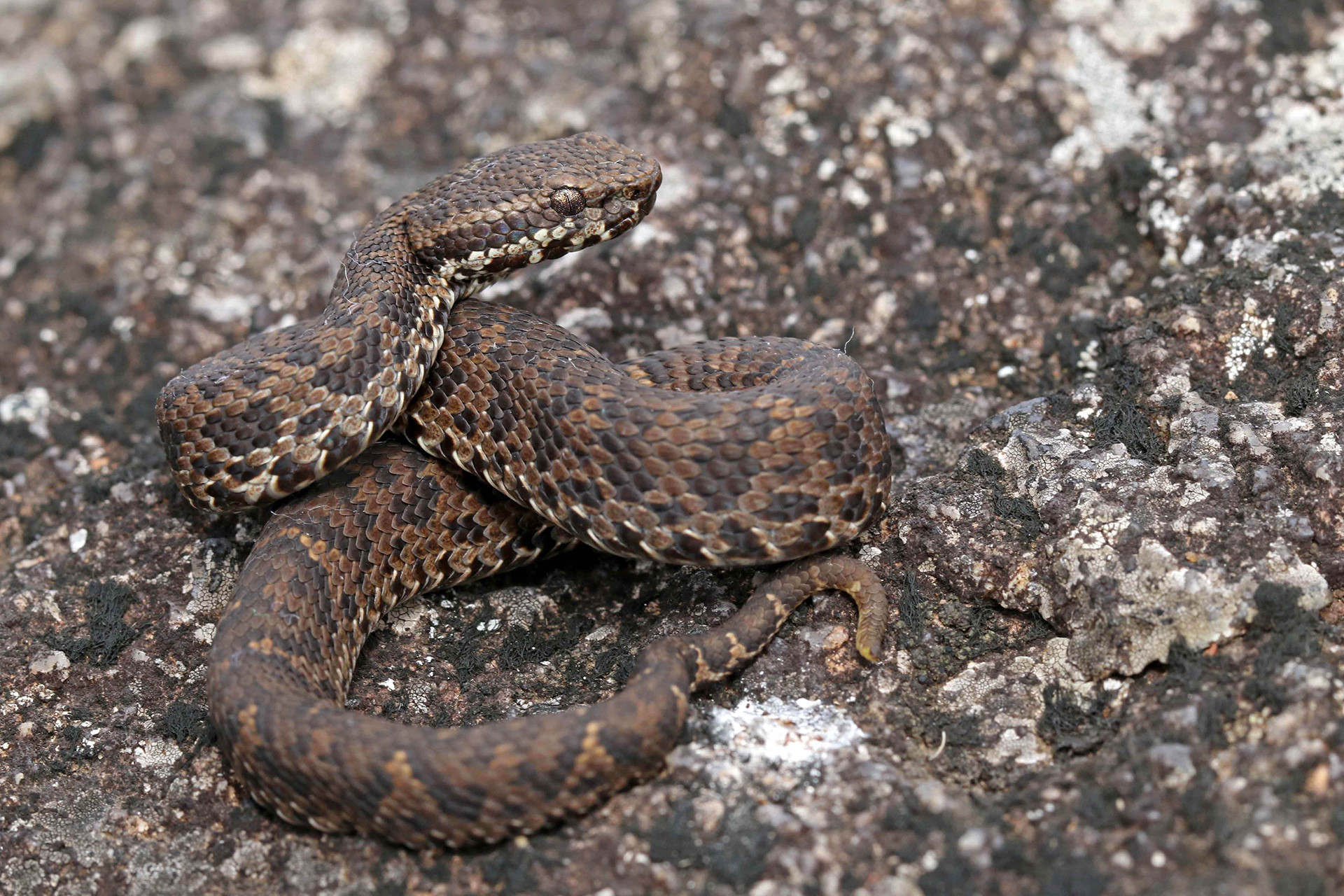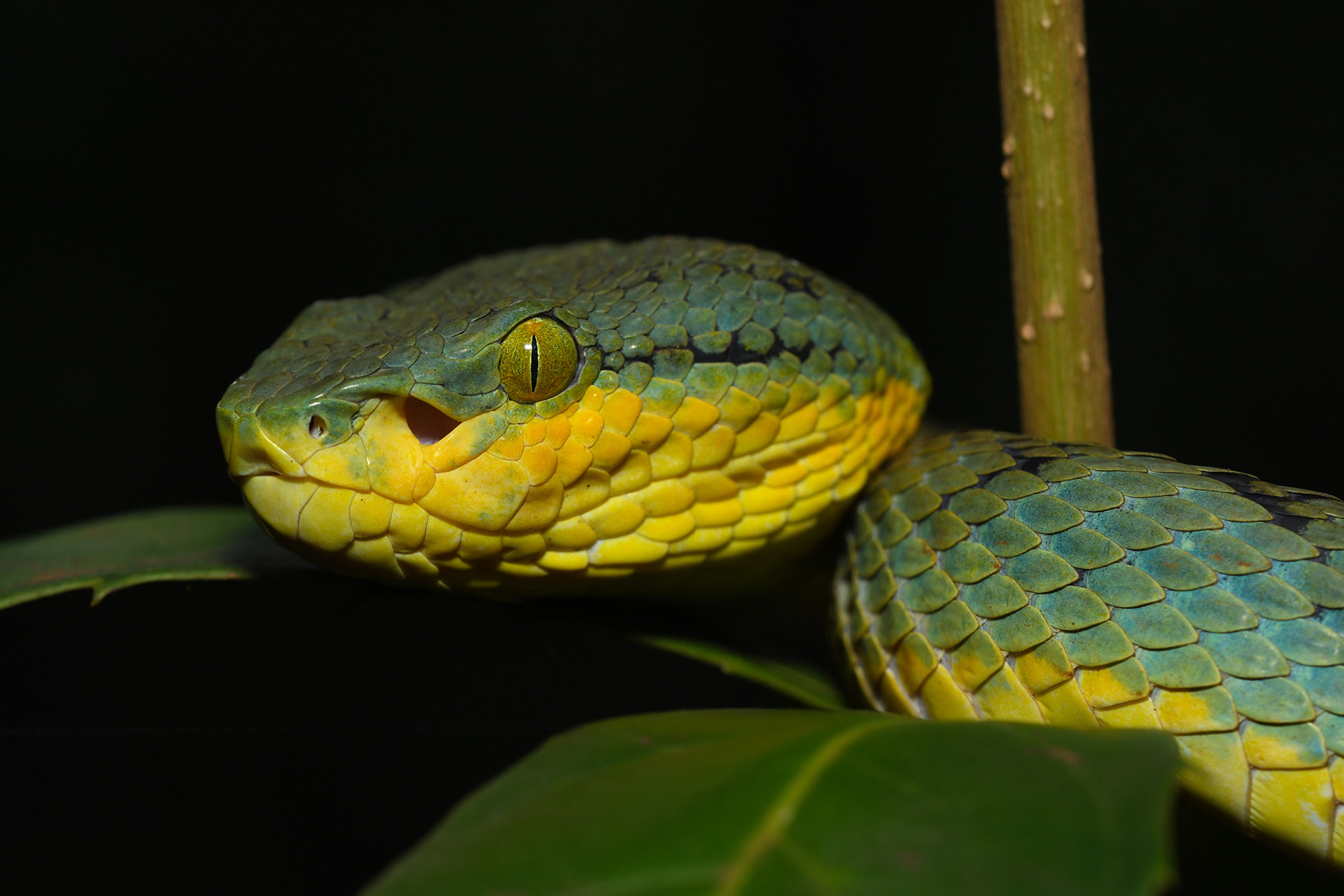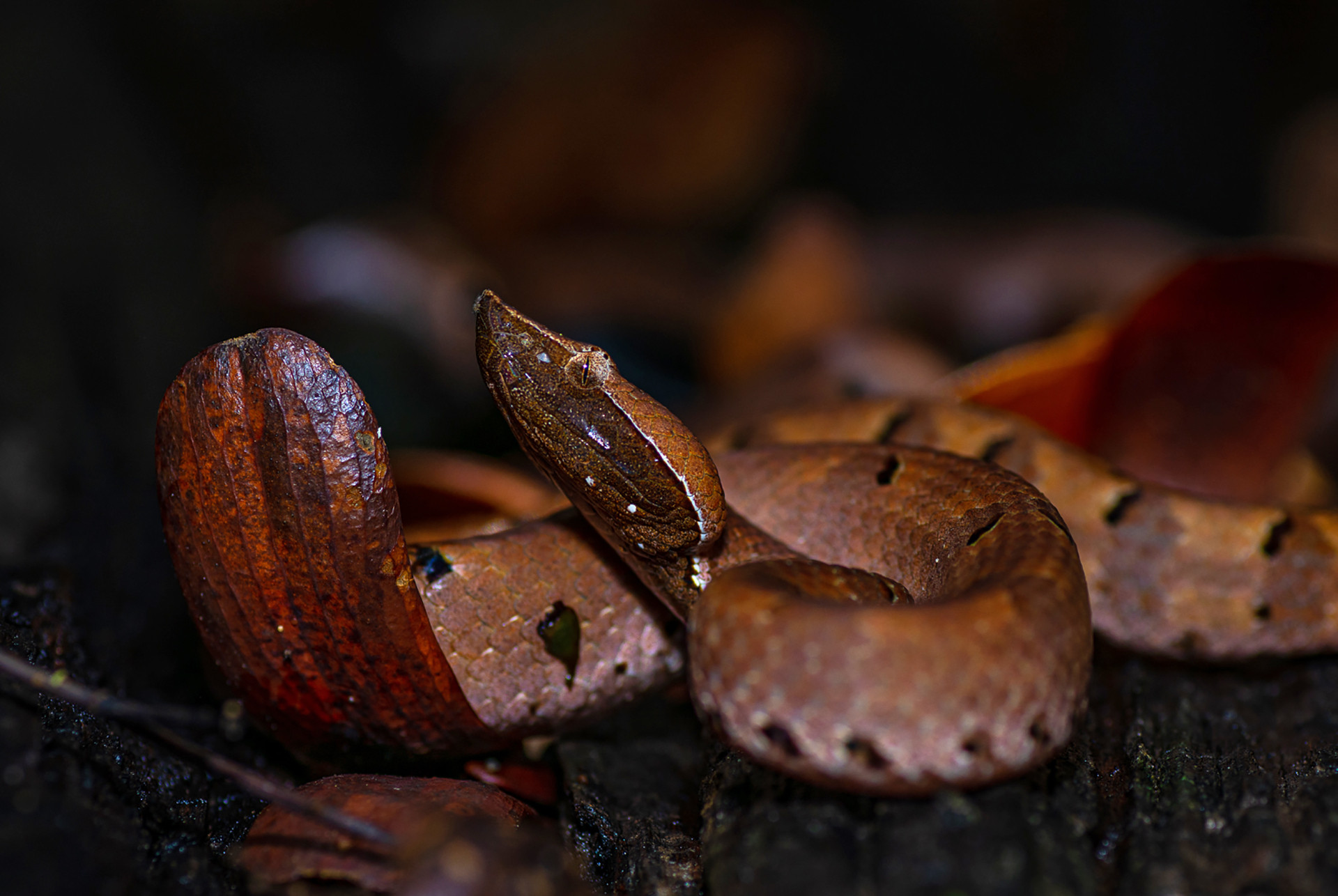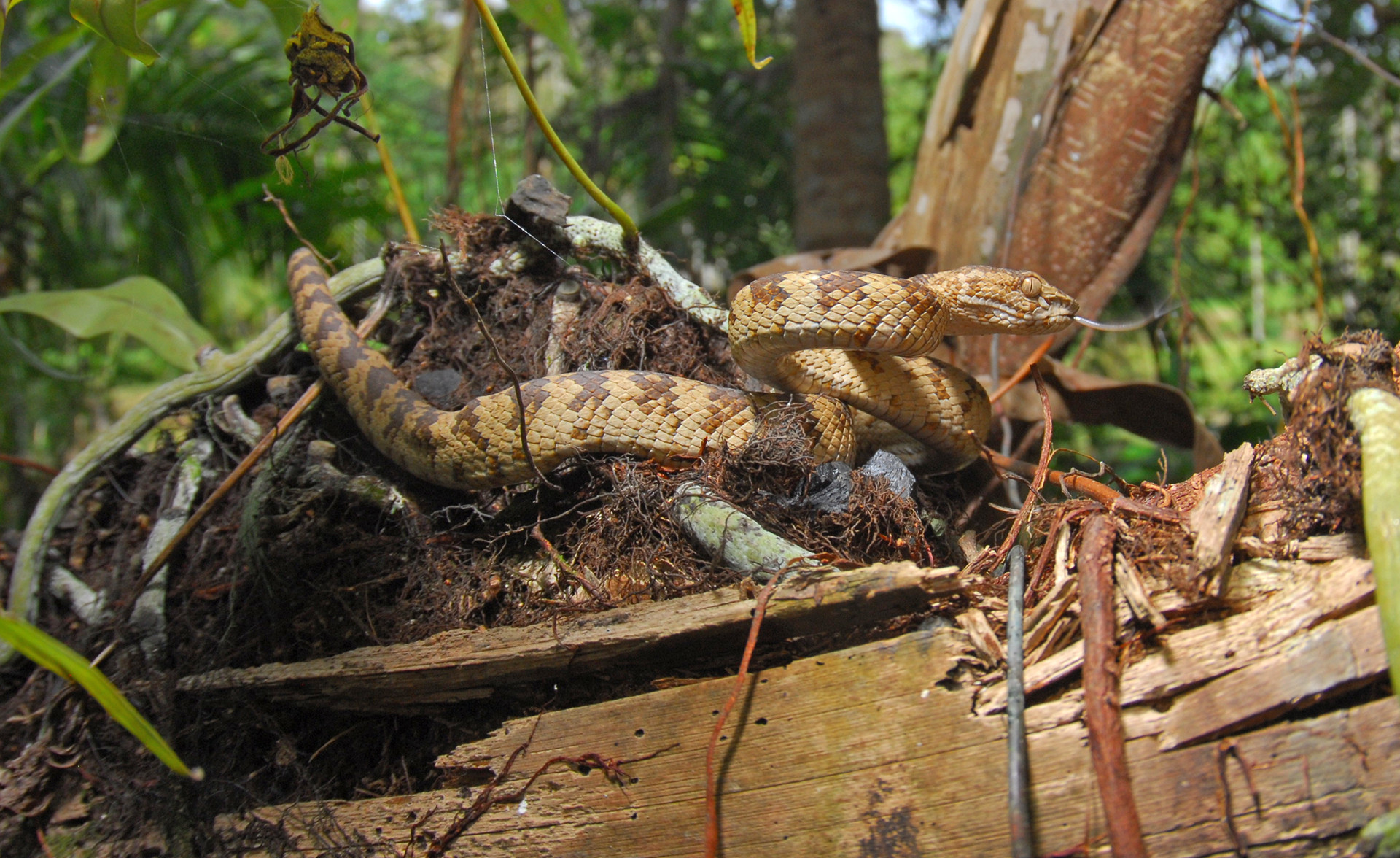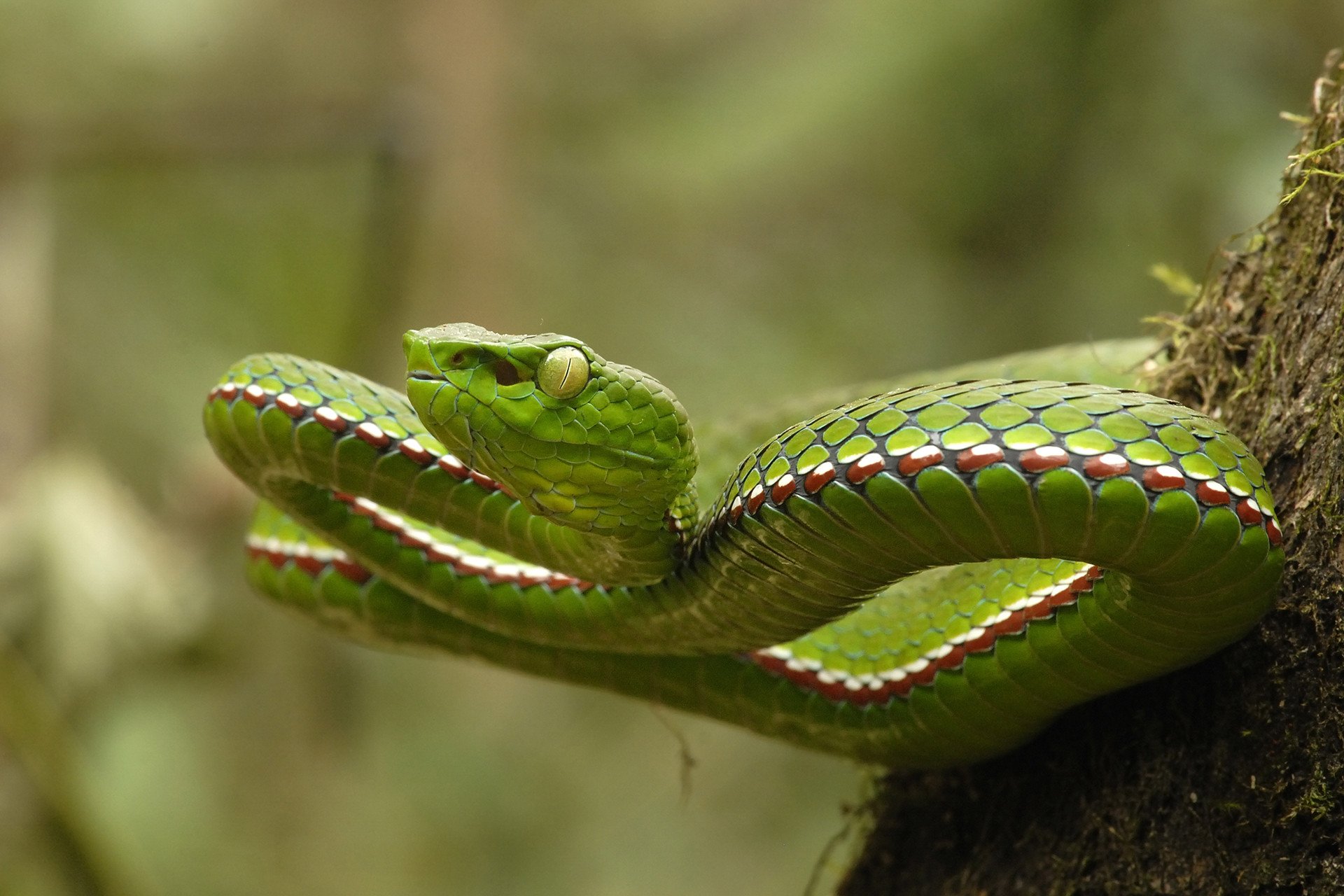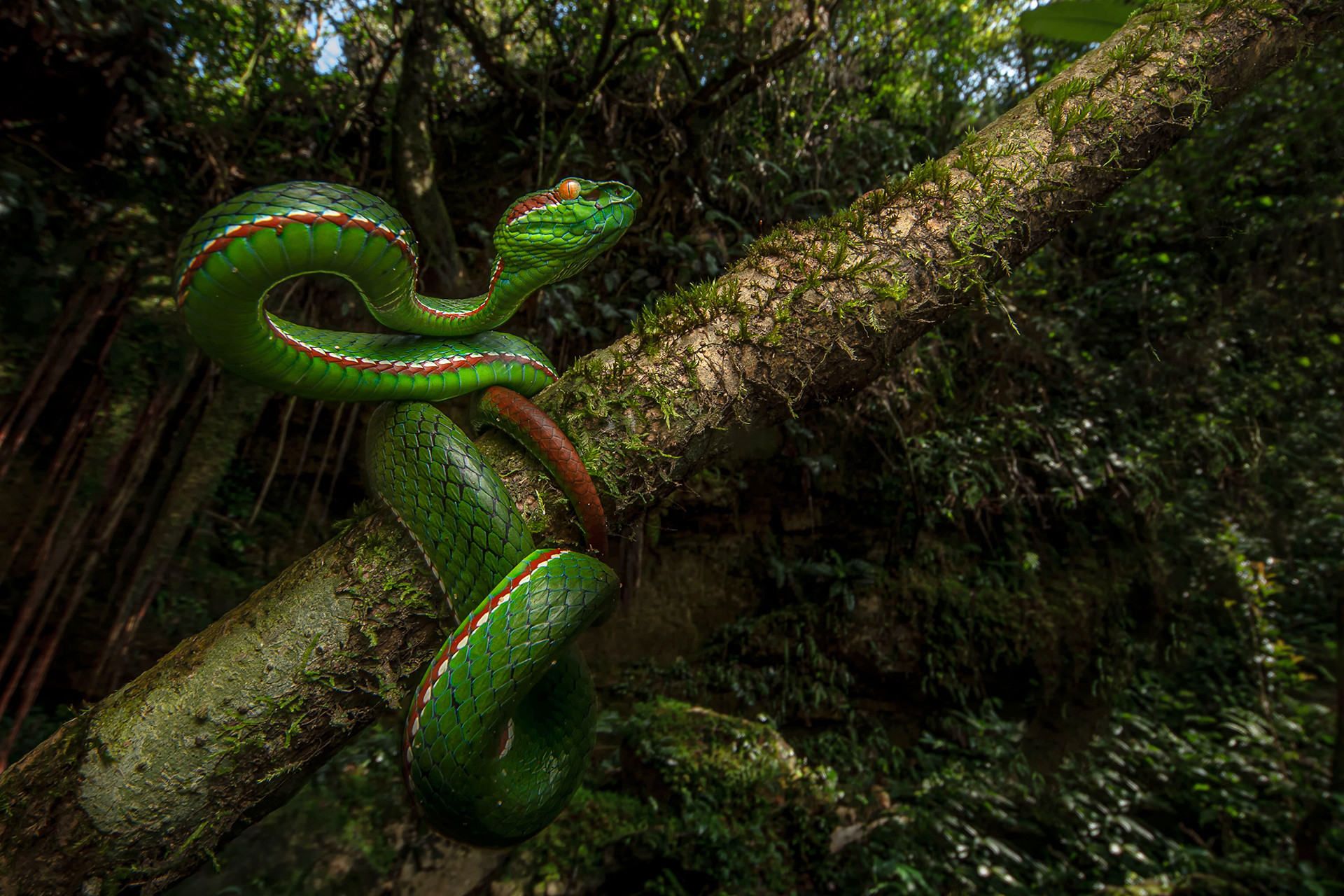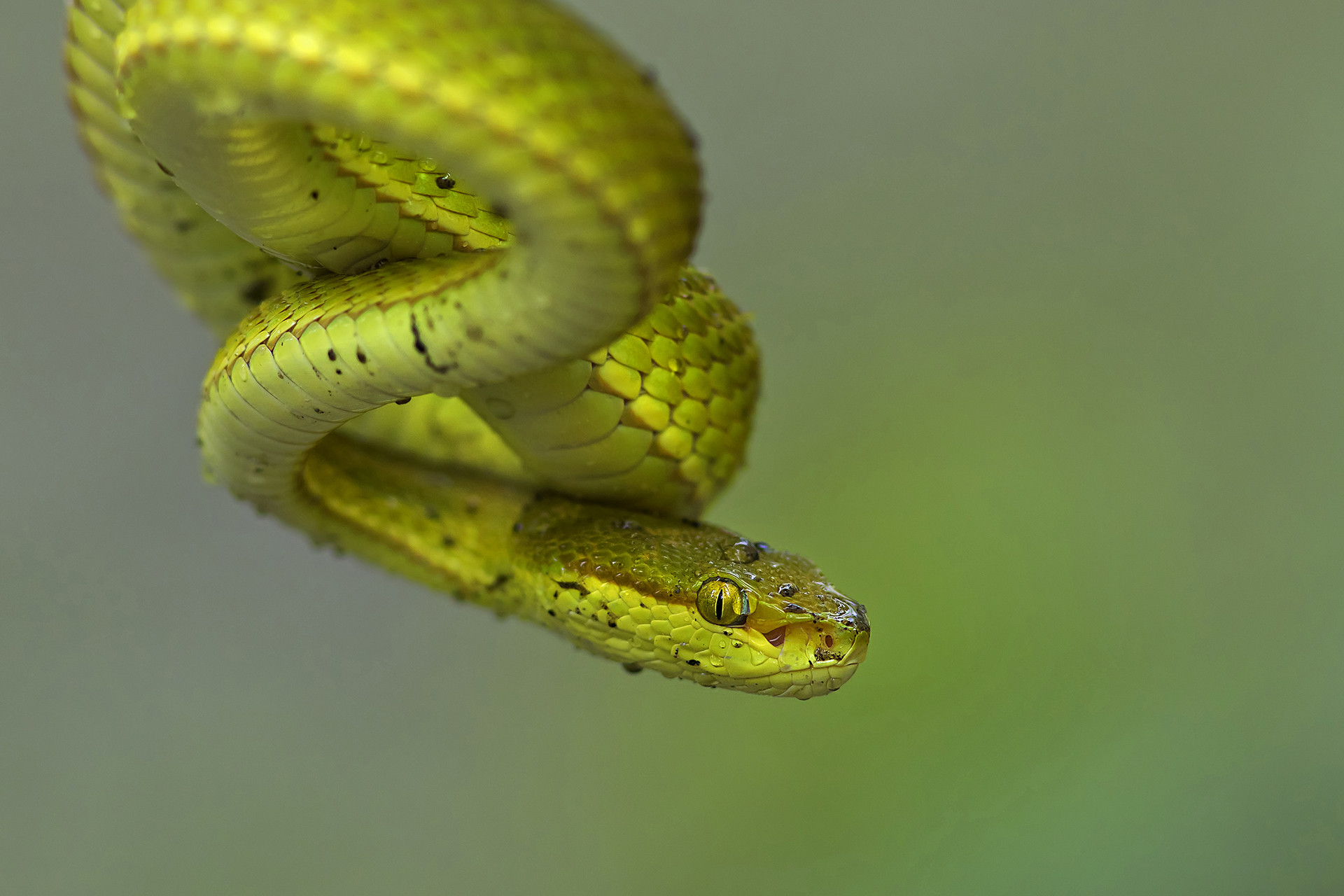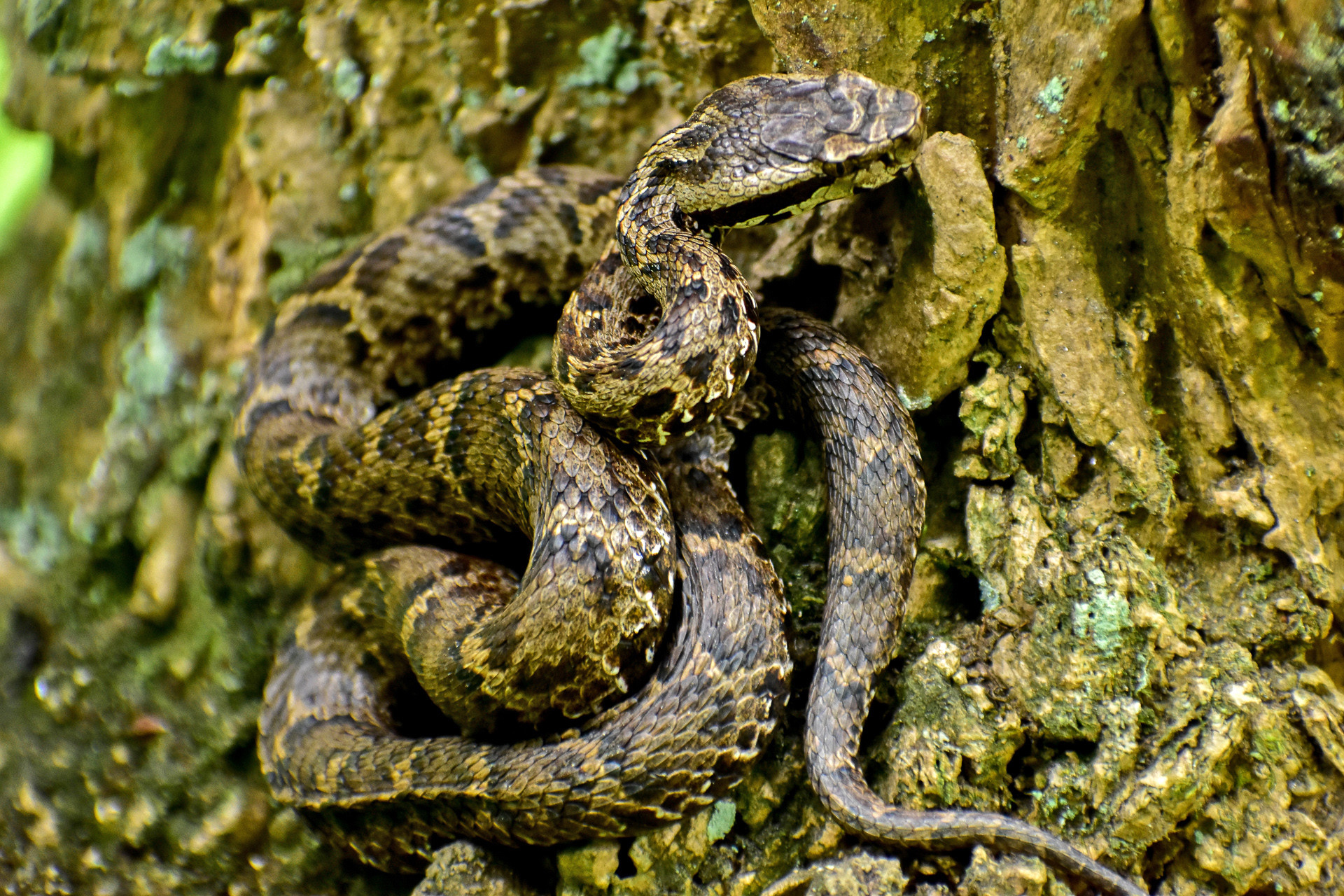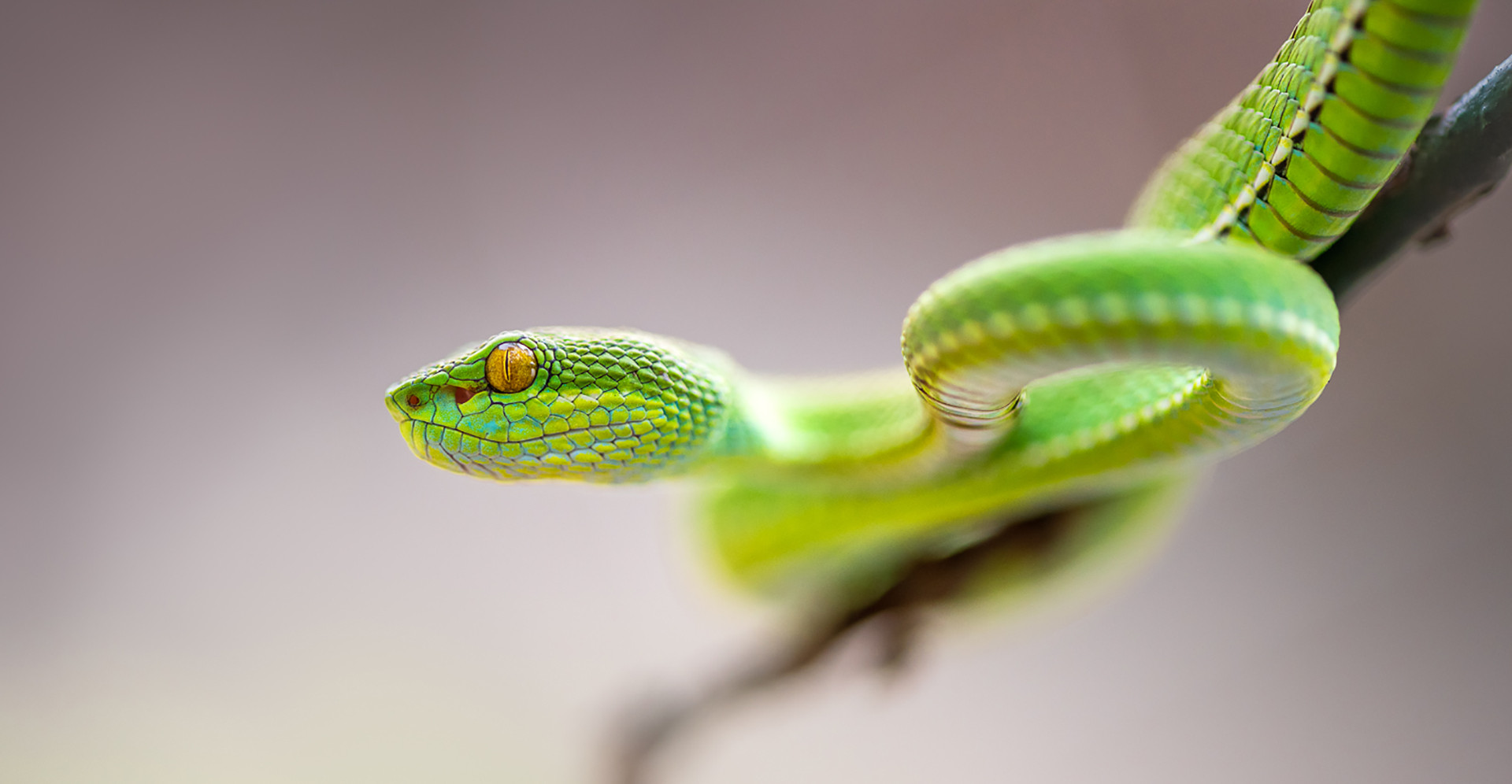Discovered by a group of researchers on an expedition in the forests of Arunachal Pradesh in late 2019, the Salazar's Pit Viper (Trimeresurus salazar) is the latest addition to the long list of crotaline snakes or pit viper species found in India. Yup, Salazar as in Salazar Slytherin, the namesake of the infamous Slytherin House of the Hogwarts School of Witchcraft and Wizardry from J.K.Rowling's fantastical Harry Potter series. This green pit viper has a reddish-orange lateral stripe on the head besides some other subtle variations, which differentiates it from three other crotaline snakes with similar scales.
The Crotalinae is a subfamily of venomous vipers, distinguished by the presence of a heat-sensing pit organ in the middle of the head, between each nostril and eye. Sensitive to infrared radiation, the organ allows these reptiles to detect and hunt warm-blooded prey even in complete darkness. It is believed that India is home to more than 28 species of pit vipers, restricted to the high rainfall areas of the Western Ghats, the Himalayas, the Northeast and the Andaman and Nicobar Islands. Loss of habitat is the primary threat facing these reptiles, as more and more forest cover continues to be converted for agricultural and urban purposes. Being highly venomous, pit vipers are feared by humans and persecuted on sight, which remains one of their most severe threats.
There is still a lot we don't know about pit vipers, for example, many species of green pit vipers seen in northeast India and southeast Asia look similar and have overlapping range distributions. Taxonomy has to be resolved at the molecular level. While researchers are doing their bit, we need to provide positive publicity for these charismatic reptiles. Here are 11 species of pit vipers found in India.
Large-scaled Pit Viper (Craspedocephalus macrolepis)
IUCN Redlist Status: Near Threatened
Large-scaled Pit Vipers are endemic to the Western Ghats, where they are normally found in elevations between 2000 and 7000 feet to the south of Palakkad, at 6000 feet in the Anamalai Hills and at 4000 feet in the Palani Hills. The species prefers to live in hilly forest patches and shola grasslands. They are also commonly seen in tea, coffee and cardamom plantations. Listed as a Schedule IV species of the Wildlife (Protection) Act, 1972, the near-threatened pit viper is greatly affected by tourism-related activities in its habitat. Linear intrusion also impacts their populations, and they frequently succumb as road kills. Large-scaled Pit Vipers feed on rodents, frogs and birds.
Fun Fact: In 2008, researchers reported two unusually long Large-scaled Pit Vipers from the Theni district of Tamil Nadu. A metre longer than the average pit viper, these snakes set a new record for the reptile's length.
Malabar Pit Viper (Craspedocephalus malabaricus)
IUCN Redlist Status: Least Concern
Another pit viper species endemic to the Western Ghats, Malabar Pit Vipers are found in the hilly terrains of Karnataka, Kerala, Tamil Nadu, Goa and Maharashtra. They are usually seen between altitudes of 2000 and 7000 feet. They inhabit evergreen and semi-evergreen forests, and the shola grasslands, where they can be found on rocks near streams. Malabar Pit Vipers display a range of colours from green, brown, orange, yellow to chocolate brown, enabling them to camouflage well in their surroundings. They prey on small birds, frogs and lizards. Like many other species of the Trimeresurus genus, Malabar Pit Vipers have prehensile tails that aid them in catching their prey.
Fun Fact: Malabar Pit Vipers are creatures of habit and frequent the same resting spot repeatedly. King Cobras are primarily snake eaters and Malabar Pit Vipers form a significant part of their diet.
Horseshoe Pit Viper (Craspedocephalus strigatus)
IUCN Redlist Status: Least Concern
The Horseshoe Pit Viper is endemic to the Nilgiri mountains of Tamil Nadu and Kerala. The pit viper gets its name from the horseshoe shape on its nape. It is known to exist in an 18,000 square kilometre range where it is mainly seen in the open shola grasslands of the Western Ghats. The terrestrial snake feeds on rodents, frogs and other smaller snakes. It is nocturnal and venomous.
Fun Fact: Horseshoe Pit Viper is one of the three pit viper species which are endemic to the Western Ghats. Despite its restricted range, there are no significant threats to the species.
Bamboo Pit Viper (Craspedocephalus gramineus)
IUCN Redlist Status: Least Concern
Also known as the Indian Green Pit Viper and Common Bamboo Viper, this species is found within bamboo groves in forests. These slow-moving snakes are endemic to India and are known to be widespread in the state of Tamil Nadu. Although they prefer bamboo groves, they are also observed in scrub forests and mangroves. Like their other pit viper counterparts, these venomous snakes feed on rodents, birds, frogs as well as other smaller snakes. They are nocturnal and solitary in nature.
Fun Fact: In some parts of Asia, Bamboo Pit Vipers are frequently confused with the Greater Green Snake which is non-venomous. The latter has a longer and thinner torso and a long, thin head compared to the Bamboo Pit Viper.
Hump-nosed Pit Viper (Hypnale hypnale)
IUCN Redlist Status: Unknown
The Merrem’s Hump-nosed Pit Viper or the Hump-nosed Pit Viper is the most common pit viper species of the genus Hypnale. They are widely distributed in Sri Lanka and India. In India, they are found in the Western Ghats of Maharashtra, Goa and southern India. They are often seen in dense forests and coffee plantations where they seek refuge under leaf litter or thick bushes. They are terrestrial reptiles and ambush predators. Hump-nosed Pit Vipers have been observed to feed on skinks, amphibians and agamids. They attract prey by vibrating their tail. Although they were considered moderately venomous snakes, several recent accounts of snake bites in humans have resulted in acute complications.
Fun Fact: In a study carried out by the University of Goa, researchers found that gravid females among Hump-nosed Pit Vipers shifted to cashew plantations in search of an ideal gestation site. Male pit vipers were not commonly found in these plantations.
Andaman Pit Viper (Trimeresurus andersonii)
IUCN Redlist Status: Unknown
Endemic to the Andaman islands and also found in the Car Nicobar islands where it is less common, Andaman Pit Vipers are a terrestrial and nocturnal species. They are mostly seen on forest floors and forest tracks and rarely occupy lower bushes. About ten colour variants of Andaman Pit Vipers have been documented, including reddish-brown, light brown and black. Based on anecdotal evidence, it has been reported that the black form is more aggressive when threatened. They are known to feed on rodents and frogs and are often sighted after the onset of rains.
Fun Fact: An observation made by the local inhabitants is that Andaman Pit Vipers occupy the same spot in the forest every night unless they are disturbed.
Medo Pit Viper (Trimeresurus medoensis)
IUCN Redlist Status: Unknown
The rare Medo Pit Viper is found in India, China and Myanmar. This arboreal reptile resides in wet montane forests. In Arunachal Pradesh, they are frequently found near bamboo groves and have been observed hibernating on dead bamboo. Although they are tree dwellers, they are known to hunt for frogs and rodents on the ground. Due to their varied distribution, not much is known about the population status or the threats faced by the species.
Fun Fact: In 2014, researchers found a Medo Pit Viper in a house near the forest edge of the Tura Peak in Meghalaya, documenting it as the first sighting of this species in the state.
Pope’s Pit Viper (Trimeresurus popeiorum)
IUCN Redlist Status: Least Concern
Inhabitants of bamboo forests, swamps and wet mountain forests, Pope's Pit Vipers are present in India, Myanmar, Malaysia and Thailand. They are crepuscular and nocturnal and can often be seen hanging over streams within forests. Pope's Pit Vipers feed on frogs and rodents. Their venom contains a neurotoxin that is dangerous to humans.
Fun Fact: They are often confused with a subspecies of the Stejneger’s Pit Viper and differentiation between the two is done by closely examining the males of the species.
Salazar's Pit Viper (Trimeresurus salazar)
IUCN Redlist Status: Unknown
Described as recently as April last year, the Salazar's Pit Viper is a new green pit viper species from a Himalayan biodiversity hotspot in the northeastern state of Arunachal Pradesh. The nocturnal reptile with its unique reddish-to-orange stripe along the head and body of males was discovered by a research group led by Dr Zeeshan A. Mirza. Potterheads, all three authors of the paper, they named the species after the fictional wizard Salazar Slytherin as a token of appreciation for author J.K. Rowling who gifted the world 'Harry Potter'.
Fun Fact: Salazar's Pit Viper is the fifth variety of reptile to have been discovered in Arunachal Pradesh in a little over a year, following the Impressed Tortoise (Manouria impressa).
Himalayan Pit Viper (Gloydius himalayanus)
IUCN Redlist Status: Unknown
The Himalayan Pit Viper is distributed across Jammu and Kashmir, Himachal, Pradesh, Uttarakhand, and West Bengal. The pit viper species occupies the lower slopes of the Himalayas and is found in altitudes of about 16,000 feet. Primarily nocturnal, they seek refuge in rock crevices, under rocks and debris near streams to bask in the sun during the day. They have also been sighted in agricultural fields. These pit vipers move very slowly and feed on millipedes, centipedes as well as small rodents. Their bites cause local, painful swelling in humans. Due to lack of awareness, Himalayan Pit Vipers are often killed at sight.
Fun Fact: They are known for their lethargic behaviour. When faced with a threat, they sometimes coil themselves and vibrate their tail in retaliation.
Red-tailed Pit Viper (Trimeresurus erythrurus)
IUCN Redlist Status: Least Concern
The Red-tailed Pit Viper or the Redtail (bamboo) Pit Viper is found in India, Bangladesh and Myanmar. In India, they are mainly seen in Assam and Sikkim, although the pit viper species has also been spotted in the Sunderbans and parts of Arunachal Pradesh, Nagaland as well as Tripura. Red-tailed Pit Vipers occupy moist forests in regions where they are found. Although their conservation status is listed as Least Concern, conversion of forest area for agriculture is a significant threat to this species. Like other pit vipers, they feed on small amphibians and mammals.
Fun Fact: It is difficult to distinguish this pit viper at the species level, and identification involves looking at the highly keeled scales on its head.
The team wishes to thank Ajay Kartik, Sneha Dharwadkar and Avrajjal Ghosh for their inputs.
Edit 1: The earlier list had 12 species; we have removed White-lipped Pit Viper as its ID and range distribution is under debate.
Edit 2: Scientific names have been updated as per the latest taxonomic updates, as of December 2022.
